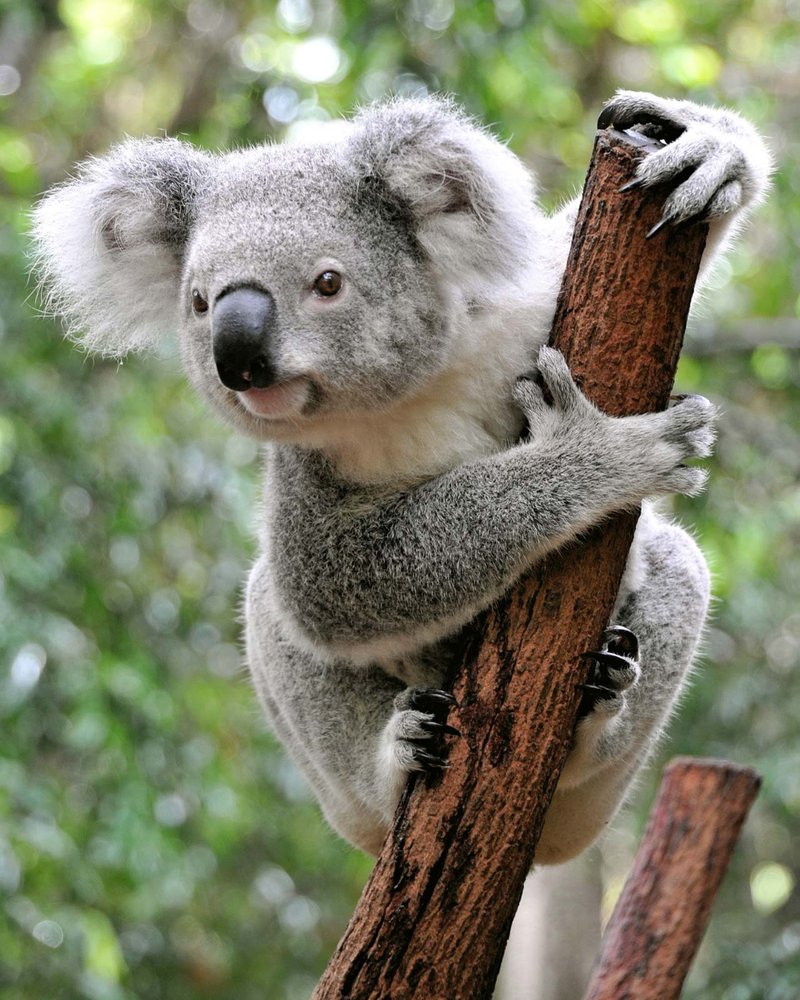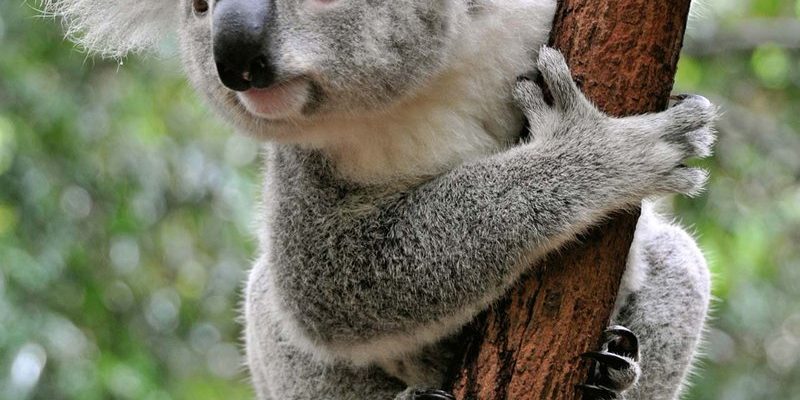
Koalas have a pretty unique way of living that revolves around their diet, primarily consisting of eucalyptus leaves. This choice might seem odd, considering the leaves are tough and low in nutrients. But here’s the thing: koalas have adapted remarkably well to consume these leaves, making them true specialists in their niche. Along the way, we’ll uncover how they hunt for food—yes, even koalas have their hunting tactics, albeit not in the conventional sense.
What Do Koalas Eat?
If you thought koalas munched on a variety of foods, think again. Their diet is surprisingly limited. Koalas primarily feed on eucalyptus leaves, choosing specific species that provide them with the nutrients they need to thrive. In fact, of the nearly 700 eucalyptus species out there, koalas are picky eaters, usually sticking to about 50 of them.
Eucalyptus leaves are tough and fibrous. You might be wondering how something like a koala can survive off such a limited diet. Well, these leaves are rich in water, which helps the koalas stay hydrated. However, they are also low in calories and nutrients. To balance this out, koalas have evolved a highly specialized digestive system that allows them to break down these leaves efficiently.
And just like any gourmet, koalas are quite choosy about which leaves they munch on. They prefer younger leaves, which are tender and contain more nutrients. Older leaves tend to be tougher and can even be toxic. This is why you’ll often see koalas perched on top branches of eucalyptus trees—they’re reaching for the freshest, tastiest leaves!
How Do Koalas Find Their Food?
Let’s talk about how koalas actually locate their meals. It’s not like they have grocery lists, right? Instead, they rely on their incredible sense of smell. Koalas have a sharp olfactory system that helps them sniff out the best eucalyptus trees, allowing them to pick and choose the most suitable leaves.
However, they’re not just any eucalyptus leaves; they’re specifically looking for those that are not only edible but also rich in nutrients. By using their keen noses, they can detect leaves that are less toxic and younger. This helps them avoid leaves that might upset their stomach or provide them with inadequate nutrition.
Though they don’t “hunt” for food in the traditional sense, koalas do have a strategy when foraging. They tend to stay within a small area, called a home range, where they have a preferred set of trees. These home ranges can vary in size but usually cover about 1 to 20 hectares. It’s kind of like having a favorite restaurant you keep going back to because you know you’ll get a good meal!
Koala Digestive Strategies
Once they find their food, koalas face another challenge: how to digest those tough eucalyptus leaves. Here’s where things get a bit science-y but bear with me! Koalas have a specialized digestive system that includes a long cecum and colon, which allows for the fermentation of their food.
The fermentation process is crucial. It takes about 8 to 12 hours for food to move through their digestive system, so they have plenty of time to extract the nutrients they need. Plus, koalas have a symbiotic relationship with bacteria in their guts that helps break down the tough fibers in eucalyptus leaves. This means they can absorb more nutrients than you might expect!
To add to their adaptation, koalas also have a low metabolic rate, allowing them to conserve energy. This is why you’ll find them snoozing for up to 20 hours a day. It’s their way of staying energy-efficient while consuming a diet that’s not exactly brimming with calories.
The Role of Water in Their Diet
You might find it surprising, but koalas don’t need to drink water as often as you’d think. Their diet, primarily consisting of eucalyptus leaves, provides most of the hydration they require. This is a real advantage, especially in their often dry, Australian habitats where water sources might be scarce.
However, during periods of drought or when eucalyptus trees are less abundant, koalas might feel the impact. Sometimes, they’ll venture closer to water sources. Even though they can extract moisture from their food, it’s essential for them to supplement that with drinking when the situation calls for it. This adaptability is another reason koalas can survive in the wild.
It’s interesting to note that when stressed or during extreme weather, koalas can become dehydrated. Conservationists often provide water stations during severe droughts to help support local populations. When you think about it, caring for koalas means understanding their unique needs.
Koalas and Their Feeding Behavior
Koalas have some fascinating behaviors when it comes to eating. They tend to eat alone rather than in groups. This solitary eating style helps minimize competition for food, allowing each koala to have ample access to their favorite eucalyptus leaves.
During feeding, koalas will methodically strip leaves from branches, often leaving a distinctive pattern. As they munch, they tend to sit on one branch and move around slowly to reach different leaves without needing to climb too much. It’s like they’re conducting a slow dance through the treetops!
Interestingly, koalas also have a seasonal feeding behavior. During spring and summer, when younger leaves are more abundant, they can eat more. However, in winter, they might eat less because the leaves are tougher and less flavorful. This seasonal adjustment is part of what makes the koala so resilient—a true survivor in a challenging environment.
Threats to Koalas and Their Diet
Sadly, koalas face numerous threats that can impact their diet and overall survival. Habitat destruction is one of the leading challenges. As land gets cleared for agriculture and urban development, koalas lose access to their beloved eucalyptus trees. Without these trees, their entire way of life is at risk.
Additionally, climate change plays a significant role in affecting eucalyptus trees and, as a result, koalas’ food supply. Changes in temperature and rainfall patterns can lead to fewer nutritious leaves and more stress on the remaining trees.
Moreover, diseases like chlamydia can impact their health, affecting their ability to forage and find food. As they become weaker, their overall survival depends on successfully navigating these challenges, making conservation efforts all the more crucial.
Why Understanding Koalas Matters
So, why should we care about the diet and hunting strategies of koalas? Beyond their cuteness, koalas are an important part of the Australian ecosystem. They play a role in forest health by influencing the growth of eucalyptus trees. When they feed, they help to manage tree growth and maintain a balance in their habitat.
Protecting koalas is also about preserving biodiversity. With so many species relying on eucalyptus forests, ensuring koalas thrive helps sustain the whole ecosystem. Plus, understanding their unique diets and habits can inform conservation efforts, guiding us in protecting these remarkable animals for future generations.
Let’s face it: koalas are more than just cute faces. They represent a delicate balance within their environment. By learning about their dietary habits and challenges, we can better appreciate and support their role in nature.
In conclusion, koalas may seem simple in their eating habits, but there’s a world of adaptation behind their choice of diet and feeding strategies. Understanding them not only shines a light on their lifestyle but also highlights the importance of conservation. After all, every koala saved means a step toward preserving Australia’s unique wildlife and its delicate ecosystems.

